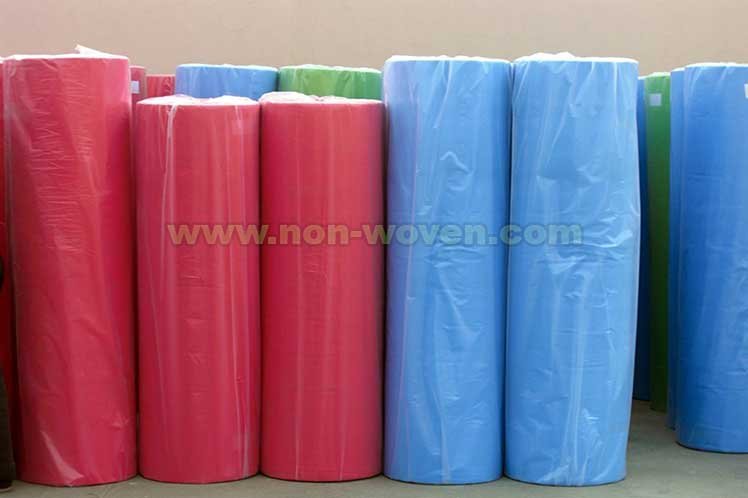Introduction
As the world looks for new ways to be sustainable, the textile industry is under pressure to find sustainable materials that can be used in a variety of applications.
Spunbond nonwovens are a type of textile made from sustainable materials that offer a number of benefits over traditional materials.
In addition to being sustainable, spunbond nonwovens are also strong and durable. They can be used in a variety of applications, such as filters, packaging, and even medical supplies.
the fabric are made from long fibers that are spun together to form a fabric. The fabric is then bonded together with heat, adhesive, or chemicals. Spunbond nonwovens are strong and durable, making them ideal for use in a wide range of applications.
the fabric are used in a variety of industries, including the automotive, construction, and medical fields. They are also used in a variety of consumer products, such as diapers, feminine hygiene products, and furniture.
the fabric are made from a variety of materials, including polypropylene, polyester, and nylon. They are available in a wide range of colors, textures, and sizes.
If you are looking for a fabric that is strong and durable, then spunbond fabric is a good option for you.
Learn more about the little-known secrets of spunbond nonwovens and how they can help you create a more sustainable future!learn more(wikipedia)
The benefits of spunbond nonwovens
Spunbond nonwovens are a type of textile that has many benefits over other textile materials. For one, spunbond nonwovens are more resistant to tearing and damage. They also have a higher level of absorbency, making them ideal for use in products such as diapers, feminine hygiene products, and even in medical applications.
Another big benefit of spunbond nonwovens is that they are cheaper to produce than other types of textiles. This makes them an attractive option for businesses and consumers alike.
If you’re looking for a durable and affordable textile, then spunbond nonwovens are a great option. With all of their benefits, it’s no wonder that spunbond nonwovens are one of the most popular types of textiles on the market today.
The types of spunbond nonwovens
There are many different types of spunbond nonwovens, each with their own unique properties and applications. The most common types of spunbond fabric are made from polypropylene, polyester, or polyamide fibers. These fibers are first melted and then extruded through a die to form long, continuous filament strands. The filaments are then laid down in a parallel fashion and bonded together using heat, pressure, or chemicals.
Spunbond nonwovens can be made in a variety of weights, thicknesses, and densities to suit a wide range of applications. They are often used in the automotive, construction, and filtration industries.
The production process of spunbond nonwovens
The production process of spunbond fabric is a complex and fascinating process. The following is a basic overview of the steps involved in making these versatile materials.
1. Polymer pellets are melted and extruded into long, thin filaments.
2. The filaments are drawn through a series of rollers to achieve the desired thickness.
3. The filaments are then deposited onto a moving conveyor belt.
4. A high-speed jet of hot air bonds the filaments together to form a web.
5. The web is cooled and wound onto a large roll.
6. The roll is then slit into narrow widths and delivered to the customer.
The applications of spunbond nonwoven
The applications of spunbond fabric are vast and varied. From hygiene products to construction materials, this type of fabric has a wide range of uses.
hygiene products: diapers,disposable bed sheets, feminine hygiene products, etc.
construction materials: roofing felt, insulation, acoustical soundproofing felt,Tamper resistant packaging, Spill containment products, etc.
Spunbond nonwoven fabric is also used in the agricultural industry for crop covers, weed control matting, and seed Germination. Additionally, this type of fabric is oftentimes used in the automotive industry for headliner fabrics, carpet backing, and upholstery.
As the world looks for new ways to be sustainable, the textile industry is under pressure to find sustainable materials that can be used in a variety of applications. Spunbond nonwovens are a type of textile made from sustainable materials that offer a number of benefits over traditional materials. In addition to being sustainable, spunbond nonwovens are also strong and durable. They can be used in a variety of applications, such as filters, packaging, and even medical supplies. Spunbond nonwovens are made from long fibers that are spun together to form a fabric.
The fabric is then bonded together with heat, adhesive, or chemicals. Spunbond nonwovens are strong and durable, making them ideal for use in a wide range of applications. Spunbond nonwovens are used in a variety of industries, including the automotive, construction, and medical fields. They are also used in a variety of consumer products, such as diapers, feminine hygiene products, and furniture. Spunbond nonwovens are made from a variety of materials, including polypropylene, polyester, and nylon. They are available in a wide range of colors, textures, and sizes. If you are looking for a fabric that is strong and durable, then spunbond nonwoven fabric is a good option for you.

